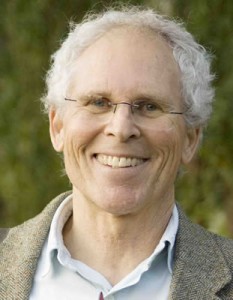
If you’re like I am, when you travel abroad, on returning home you may see Laguna Beach through a slightly different set of eyes. Comparisons, contrasts, and spatial connections–all involving Laguna and the wider world–that I had not seen before embarking on trips to foreign lands seem to jump out at me on returning to our seaside town.
Such was the case when our family visited China in 2010, during the Shanghai Exposition. On that occasion I learned that prevailing winds carried China’s coal-burning carbon emissions across the Pacific to the Southland. This reminded me that Laguna was an integral part of the ecology of the Pacific world. What happens in the world’s largest ocean basin, in short, is likely to have some effect on our coastal community.
In mid-November of this year our family returned from touring parts of Australia, New Zealand, and Tahiti. We were joined part of this time by our younger son, Todd, a 2002 LBHS graduate now living and working in Sydney. As the driver of our rental car in the lands “down under,” our son contended with the traffic flows on the left and the narrow, curvy highways with no lane of escape should one be needed. Our drive to Port Douglas, to visit Australia’s Great Barrier Reef, took us into a tropical setting of lush rain forests, river-fed pools that were great for swimming, and balmy air temperatures.
Snorkeling at the Great Barrier Reef was both wonderful and instructive. I learned that those knowledgeable about the reef were monitoring the effects of ocean acidification on its corals. Porites (small yellow stony corals) reportedly are declining at an unprecedented rate according to Scientific American magazine. The food web of the reef is dependent on the health of these corals. On our side of the Pacific, oceanographers and others are similarly concerned about reef habitats, which are under siege from the rise of carbonic acid levels, ocean warming, and pollution. In Laguna, the MacGillivray family’s One World One Ocean initiative has included participation in the Mission Aquarius reef study and protection project. Snorkeling at the Great Barrier Reef brought home to me the global reach and seriousness of coral concerns among many Lagunans.
On the Tahitian island of Moorea more ocean-related adventures and education awaited us. We swam with sharks, stingrays, and colorful tropical fish in the clearest, warmest ocean water I’ve ever encountered. I learned while looking at a tourist map that on Cook’s Bay was located a “Berkeley University.” Intrigued by this, I discovered that UC Berkeley operates a marine science study center there, the Gump Research Station. By this time Todd, a Berkeley alumnus, had returned to Sydney, so my wife and I rented a car and drove to the Gump facility, where I interviewed some of the staff and took photos of the idyllic setting overlooking the bay. Undergraduate student Trevor Allen and the senior researcher Suzanne Mills were studying the effects of climate warming on selected marine organisms in Tahitian waters. Their findings will be presented at a UC Berkeley symposium. I intend to follow up on their results and report back, knowing of keen interest in our town about such matters. Assistant director Frank J. Murphy described participating in a presentation on rising sea levels at a United Nations conference in Qatar. A scientist from that country, he said, projected a two-meter rise within 50 years that would devastate some Pacific atoll nations. If that scientist is right, what would be the effect on Laguna’s Main Beach and the nearby businesses along Coast Highway, particularly in an El Niño year? Hmm. Of course we are connected to the Pacific world.
Tom Osborne, a retired Santa Ana College history professor and recipient of the city’s Environmental Award, has written three books and specializes in California and Pacific maritime history.





[…] Green Light: Laguna and the Pacific World – If you’re like I am, when you travel abroad, on returning home you may see Laguna Beach through a slightly different set … As the driver of our rental car in the lands “down under,” our son contended with the traffic flows on the left and the … […]